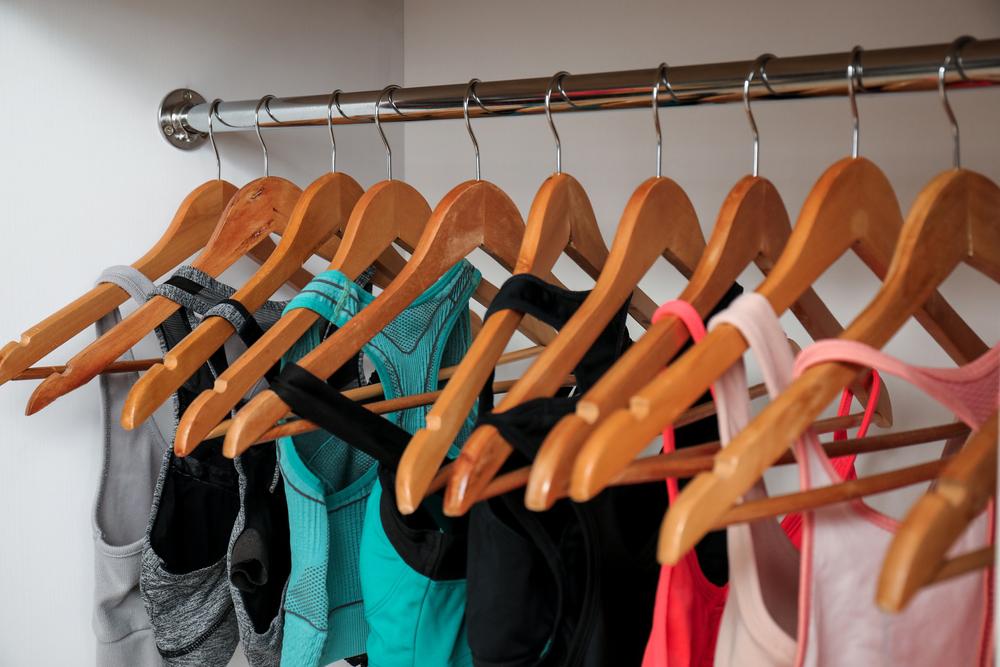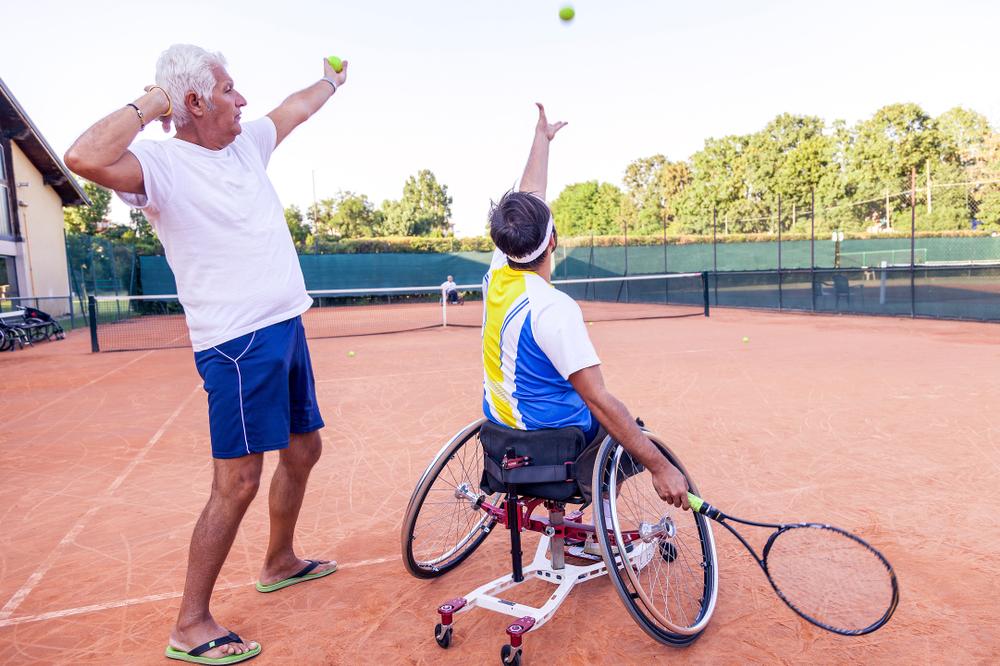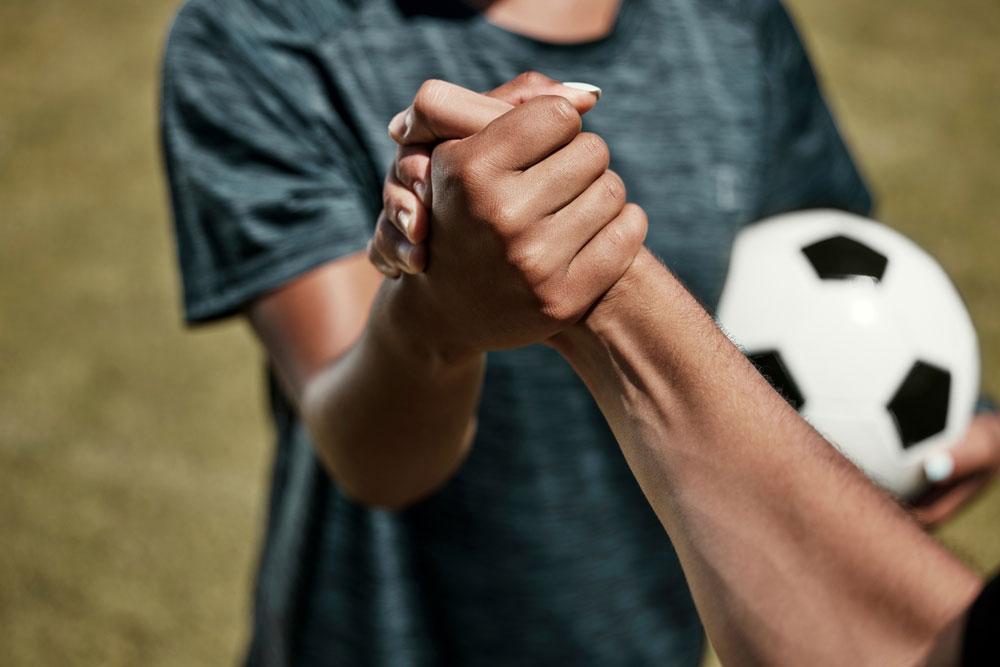 Breast size and development is a barrier to sport and physical activity for some girls and young women, but it is a natural part of growth and development that can be managed. While breast development can be uncomfortable, and at times painful, the right support can make all the difference.
Breast size and development is a barrier to sport and physical activity for some girls and young women, but it is a natural part of growth and development that can be managed. While breast development can be uncomfortable, and at times painful, the right support can make all the difference.
Here, Dr. Michele LaBotz, a TrueSport Expert and sports medicine specialist, is sharing what caregivers need to know to help their female athletes understand their development and find the support they need.
1. Understand your athlete’s concerns and discomfort
We know from current research that roughly a quarter of teenage female athletes surveyed reported that breast discomfort keeps them from being physically active at least some of the time. LaBotz notes that this number is almost certainly higher, since research has found that many girls will drop out of sport before or during puberty, possibly in part due to discomfort or self-consciousness associated with breast development.
From a physical standpoint, the development of breasts can be uncomfortable for athletes, especially those in sports that involve a lot of running. LaBotz explains that the problem stems from breast movement during sport. “For most running sports, athletes are running at cadences of about 160 steps per minute, which adds up to 9,600 bounces per hour,” she says. “For a young woman with a D cup, the amount of vertical displacement for breasts with every bounce can be up to eight inches. That is a lot of movement, so it’s no surprise that could be uncomfortable.” LaBotz notes that research found that 58 percent of subjects with a C cup or larger reported that lack of support or soreness prevented them from exercising, while for smaller cup sizes, the number decreased to 20 percent.
In addition to the potential for physical discomfort, studies have shown that breast movement associated with physical activity is psychologically uncomfortable for many girls as well. Your athlete’s feelings of discomfort are valid—but this discomfort due to a lack of support is a problem that can be solved.
2. Help your athlete see puberty as a positive
LaBotz notes that in females, puberty produces changes in body composition and center of gravity that may impact athletic performance. Help your athlete understand that while these changes can feel uncomfortable in the short term, it’s positive in the long term from a health, strength, and even performance perspective. Trying to ‘control’ puberty and avoid weight gain and breast development is a dangerous proposition that can lead to long term health struggles and decreased performance.
3. Help deal with the physical discomfort
Help your athlete view any breast discomfort the same way she would view any other minor soreness and discomfort. Treatment for breast discomfort is similar to other types of activity-related soreness: a heating pad can be applied to the chest or back area where the discomfort is most prominent, and rest is equally important, says LaBotz. She also adds that a compression shirt that offers gentle compression for the shoulders and upper arms along with the back and torso may ease feelings of discomfort. Foam rolling or massage to the back and shoulders may also help release tension in the supporting muscles. Doing “snow angels” over a foam roller often feels good and can help stretch out chest muscles that have become tight or sore.
But more importantly, athletes and caregivers should be focused on prevention, and that’s where the right sports bra comes in.
4. Find the right sports bra for support
For many young athletes, sports bras can be considered essential sports equipment. They come in all shapes and sizes, and they aren’t all created equal. Your athlete’s comfort, sport, and desired level of support will determine the best sports bra for her.
Here, LaBotz shares bra-fit tips for athletes:

Get a fitting.
Look for a local store that offers bra fitting. Unfortunately, 85 percent of girls and women are wearing bras that aren’t the correct size, and a bra that doesn’t fit properly won’t provide the support an athlete needs. Getting measured by a knowledgeable bra fitter at a store is the best way to ensure that your athlete has the right size of sports bra for them. If that isn’t accessible, help them use a soft tape measure to compare their measurements to an online sports bra sizing chart.
Look for both compression and encapsulation.
Sports bras often fall into one of two categories.
Compression sports bras: As the name suggests, these bras compress the breasts against the rib cage, but there is a lot of variability in the amount of compression they provide. This is the most common type of sports bra used by young athletes.
Encapsulation sports bras: These bras separate the breasts into two chambers rather than just having a single ‘shelf’ and often provide better “bounce control” than compression bras, especially for larger cup sizes. These bras should fully cover the entire breast, and while the bra should have some movement, it shouldn’t be stretchy.
For athletes concerned about breast movement or discomfort, bras that combine these features are often the best option. “Sports bras where there is the encapsulation underneath and compression over top are far better at reducing discomfort and breast motion than the compression alone,” LaBotz says. This is particularly true in athletes with larger breast sizes.
Check band size.
Breast size and band size have less in common than you may expect. Many young athletes may have smaller band size (the measurement taken under the breasts) compared to their cup size (which refers to the size of the breasts themselves). Because of this, it’s easy to end up with a sports bra that fits on the breasts but doesn’t provide compression thanks to a loose band. Other athletes may find that while they have a smaller cup size, they require a wider band. “The band should fit snugly around the chest,” says LaBotz. “The brand shouldn’t feel like it’s digging in, and it shouldn’t be moving around. When your athlete is trying the bra on, have them raise their arms. Does the bra move around? If so, the band is too big.”
Consider the straps.
The wider the strap, the more support it can provide—this is important for larger breasted athletes who experience shoulder pain. Make sure that the straps are adjustable, or if not, that they provide a feeling of support. Bras with loose straps are not providing the needed support. When an athlete doesn’t feel like they have proper breast support, they often will change their running gait to minimize the movement, which can actually make a runner less efficient.
Test out the sports bra at the store.
Have your athlete do jumping jacks and move their arms around while in the fitting room, says LaBotz. A sports bra may feel comfortable and compressive while standing still, but can it handle movement? “Make sure your athlete replicates the movements that they do in their sport as best they can while trying the bras on,” LaBotz says. “The band should be staying flat against the skin and they should feel as though their breasts aren’t moving with them, but they should still be able to move and breathe comfortably.”
Sports bra needs may change throughout the month.
“Some girls, especially those who experience significant changes related to the menstrual cycle, may notice a difference in breast size at different points of their cycle,” says LaBotz. This may also shift their perception of breast tenderness and pain and your athlete may find that her preferred bra type may change over the course of her cycle.
It may be an initial investment.
“The larger breast size, the higher the potential for physical or mental discomfort, which can lead to a decrease in self-confidence. This is particularly true for girls who develop early” LaBotz says. “Unfortunately, the sports bras that offer the most support tend to be more expensive. But it’s an important investment.” If cost is an issue, consider speaking to your athlete’s coach, as some schools may have the budget to add sports bras to the uniform. The other option is to double up the sports bras, covering an encapsulation bra with a compression sports bra. This may be less expensive while still providing support, but can also be less comfortable, especially in the heat.
The costs associated with good sports bras can be a barrier for some athletes and some communities. Bras for Girls and The Sports Bra Project are non-profit organizations that can help families and communities gain access to these important pieces of sports equipment.
Bonus Tip: Although some athletes choose and wear their sports bras as a fashion statement, other girls may be self-conscious about the appearance of a more supportive bra, especially if the uniform does not provide full coverage. This is especially common if the athlete has developed at a young age and all their teammates are still in lightweight bralette-style sports bras that provide more fashion than support. If that’s the case, consider talking to the coach or exploring other uniform options that allow the sports bra to be completely covered.
_______________________
Takeaway
Breast discomfort and self-consciousness can be a major barrier to play for young female athletes, particularly those who develop larger breasts. Assuring that these athletes are in supportive and properly fitting sports bras can help them move more comfortably and confidently on the playing field.



